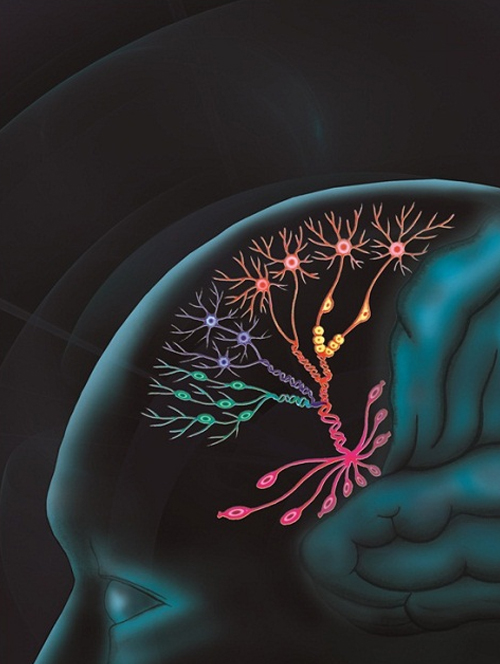Release date: 2018-03-20
Recently, Wang Xiaoqun's research group of the Institute of Biophysics of the Chinese Academy of Sciences, Tang Fufu Group of the Future Center for Gene Diagnosis of Peking University, Qiaojie Group of Peking University Third Hospital and Zhang Jun Research Group of Anzhen Hospital of Capital Medical University The single-cell transcriptome map of the prefrontal embryo development process of human brain was drawn, and the key function of the cell type was studied systematically, which laid an important foundation for drawing a complete human brain cell map.
The involvement of the frontal cortex in the advanced intellectual activities of the human brain is an important material basis for human thought. Along with the process of priming from primates to modern humans, the human brain has tripled in capacity and is mainly reflected in the increase in the area of ​​the prefrontal cortex. The prefrontal cortex is one of the most important areas of the brain, with extremely complex and extensive neural distribution and two-way connections. For example, there is a rich direct connection between the prefrontal cortex and the thalamus, caudate nucleus, globus pallidus, amygdala, and hippocampus. Through these structures, indirect neural connections are made between the hypothalamus and the midbrain, and these neural connections are also important biological basis for various physiological and psychological functions of the prefrontal cortex. However, the current research knows little about brain science issues such as "what cells are in the human prefrontal lobe, how these cells are produced during embryonic development".
In this study, the researchers found through single-cell transcriptome sequencing that the dynamically developing human prefrontal cortex is mainly composed of neural stem cells, excitatory neurons, inhibitory neurons, astrocytes, oligodendrocytes, The six major types of cells, such as microglia, are composed, and these six types of cells are further divided into 35 independent cell subtypes, and the key gene expression characteristics and important biological meanings of each cell type are deeply explored. The study found that IPC of intermediate precursor cells also plays an important role in neurogenesis, especially in primates. After systematic data analysis and multi-level experimental verification, the study proposes that IPC production has two critical outbreaks, one is about 10 weeks after embryo development, IPC is mainly produced by RG, and the other peak occurs around 16 weeks of embryo development. IPC is produced in large quantities by oRG. It is through the formation of IPC in these two outbreaks that a large number of neurons can be rapidly formed during the transient development of the cerebral cortex, forming a complex and functional prefrontal cortex.

Monocle analysis explains the cell lineage of human prefrontal cortex development
A number of neuronal cells play a particularly important role in the prefrontal cortex. The vast majority of newborn neurons have begun to differentiate and migrate before the birth of human fetuses, but the current timing of these key neurodevelopmental events is not clear. Through systematic analysis and deep mining of neuronal single-cell transcriptome data, the study revealed for the first time three key stages of excitatory neuron production, migration and maturation during human prefrontal cortex development: 8-12 weeks, nerve Stem cell proliferation stage; 13-16 weeks, neural stem cells differentiate and produce a large number of new neurons accompanied by the migration phase of new neurons; 19-26 weeks, neurons begin to mature, express key functional proteins and initially form functional Neural network stage. The process of neuronal cells forming a functional neural network is a very important stage of brain development. Wang Xiaoqun's group used electrophysiological methods to conduct in-depth functional studies on the 26-week prefrontal cortex in human perinatal period. Many neurons in the cortex have the ability to normally deliver sodium and potassium currents, and deep brain neurons have the functions of issuing EPSC and IPSC.
In addition, the study also explored issues that have been divided in the field of brain development. For example, whether inhibitory neurons can be generated in situ in the cortex, one view is that the inhibitory neurons of the cortex are only derived from the ganglionic eminence located in the ventral side of the brain and migrate to the cortex; It is believed that a small number of inhibitory neurons may be produced in situ by the cortex itself. In this study, the researchers found that a small number of precursor cells of inhibitory neurons existed in the early prefrontal cortex by means of single-cell transcriptome sequencing and immunostaining, but most of these precursor cells are in the cell cycle. During the resting period, it is likely that there is no activity for dividing the generated neurons for the time being. At the same time, transcriptome data analysis also showed that excitatory neurons in the prefrontal cortex mature earlier than inhibitory neurons.
Wang Xiaoqun, Qiao Jie, Tang Fuyue, Zhang Jun are the co-directors of the research paper, Ph.D. students, Qu Sujuan, Zhang Shu, Dr. Fan Xiaoying, Wu Qian, and Yan Liying are co-first authors. The research was funded by the National Key Basic Research Development Program, the Strategic Science and Technology Special Project of the Chinese Academy of Sciences, and the National Natural Science Foundation. Related research results are published in Nature on the topic of Single-cell RNA-Seq surveys a developmental landscape of the human prefrontal cortex.
Source: Institute of Biophysics
China Extract Powder For Use As Dietary Supplement Extract Powder, Extract Powder Manufacturer
Shaanxi Kang New Pharmaceutical co., Ltd. , https://www.anabolicsteriod.com